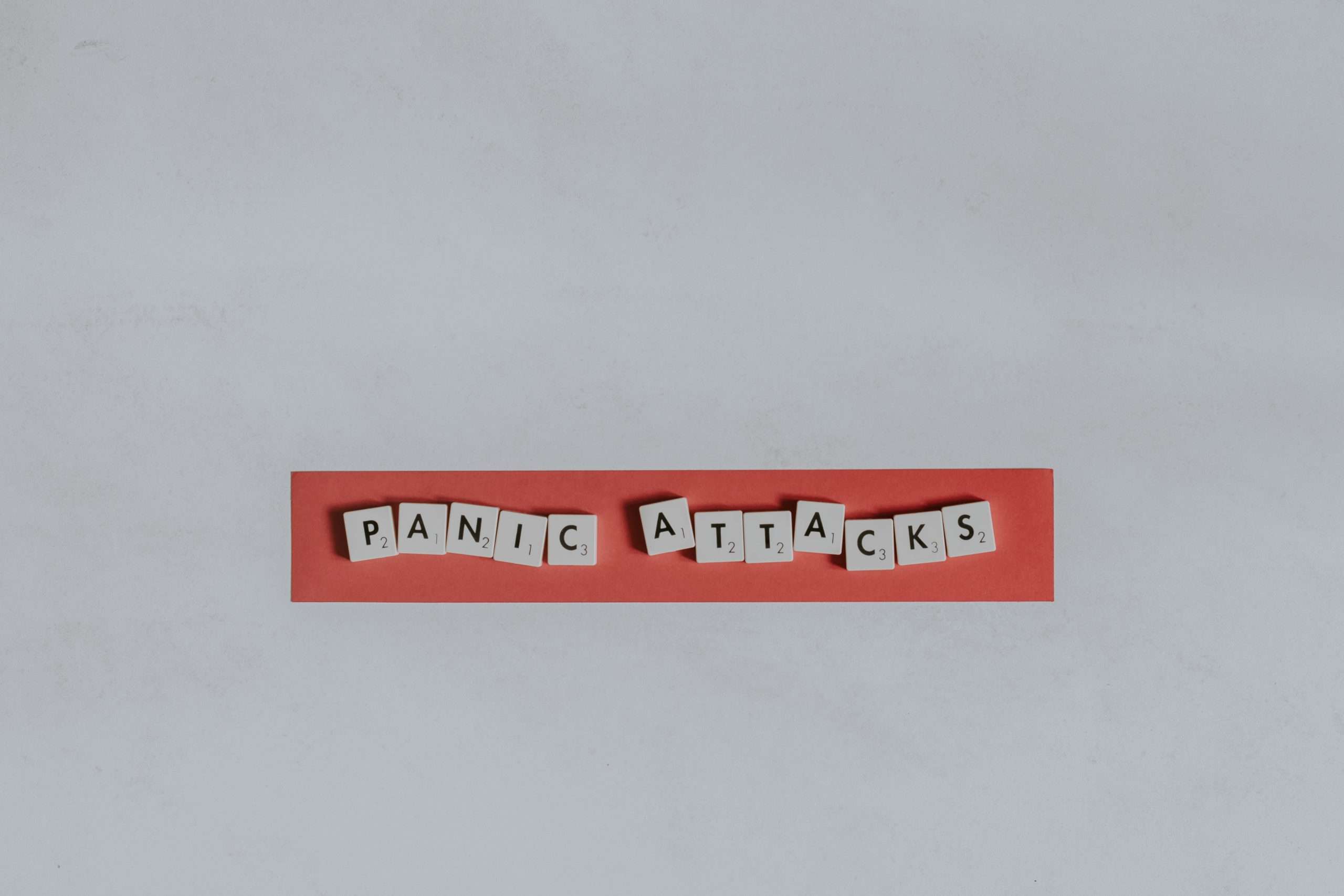 0
0
Coping with Panic Attacks: Strategies for Preventing and Managing Them
Singapore
May 19 2023
Panic attacks are intense episodes of fear and anxiety that can be overwhelming and debilitating. They often are sudden and are accompanied by physical and emotional symptoms. If you experience panic attacks, it’s essential to understand that you’re not alone and that there are strategies you can employ to prevent and manage them. In this article, we will explore practical techniques to cope with panic attacks, enabling you to regain control and find relief from the gripping effects of anxiety.
What is a Panic Attack?
A panic attack is a sudden episode of intense fear or discomfort that peaks within minutes. It is often accompanied by physical symptoms such as a rapid heartbeat, shortness of breath, chest pain, dizziness, and emotional symptoms like a sense of impending doom or a fear of losing control.
Physical and emotional symptoms experienced during an attack: Panic attacks can manifest through various physical symptoms, including a pounding or racing heart, sweating, trembling or shaking, shortness of breath, chest pain or discomfort, nausea or stomach distress, dizziness or lightheadedness, and sensations of choking or smothering. Emotionally, individuals may experience intense fear, a sense of impending doom, a loss of control, or a detachment from reality.
Understanding the difference between panic attacks and anxiety: While panic attacks are intense and sudden episodes of fear, anxiety is a broader term that refers to persistent excessive worry or fear about various aspects of life. Panic attacks can be a symptom of an anxiety disorder, such as panic disorder or generalized anxiety disorder (GAD).
Common Triggers of Panic Attacks
Identifying common triggers, such as specific phobias, stressful situations, or past traumatic experiences: Panic attacks can be triggered by various factors, including specific phobias (such as fear of flying or heights), stressful life events or situations (such as public speaking or financial difficulties), or past traumatic experiences (such as accidents or abuse). Identifying your personal triggers can help you develop targeted coping strategies.
Exploring the connection between panic attacks and generalized anxiety disorder (GAD): Panic attacks can be associated with generalized anxiety disorder, a condition characterized by excessive worry and anxiety about everyday life events or situations. Understanding the relationship between panic attacks and GAD can provide insight into the underlying causes and effective treatment approaches.
Recognizing the role of genetics and brain chemistry in panic disorder: Research suggests that panic disorder can have a genetic component, meaning it can run in families. Additionally, imbalances in certain brain chemicals, such as serotonin and norepinephrine, may contribute to the development of panic attacks. While these factors may play a role, it’s important to note that panic attacks can occur in individuals without a family history or specific brain chemistry imbalances.
Strategies for Preventing Panic Attacks
Stress Management Techniques: Stress can trigger or exacerbate panic attacks. Incorporating stress management techniques into your daily routine can help reduce overall anxiety levels and prevent panic attacks. Consider practising relaxation exercises such as deep breathing, progressive muscle relaxation, or meditation. Regular exercise, adequate sleep, and a balanced diet are also essential for managing stress.
Limiting Caffeine and Stimulant Intake: Caffeine and stimulants can increase anxiety levels and contribute to panic attacks. It’s essential to be mindful of your intake of substances like coffee, tea, energy drinks, and certain medications or supplements that contain stimulants. Limiting or avoiding these substances can help reduce the likelihood of panic attacks.
Regular Sleep Patterns: Establishing a consistent sleep schedule and practising good sleep hygiene can positively impact your overall well-being and anxiety levels. Aim for a regular sleep routine, create a comfortable sleep environment, and avoid stimulating activities or screens close to bedtime. Addressing any sleep disturbances or insomnia can contribute to better overall mental health.
Education and Understanding: Gaining knowledge about panic attacks and their underlying causes can help demystify the experience and reduce anxiety. Educate yourself about the body’s stress response system and how it contributes to panic attacks. Understand that panic attacks, although distressing, are not life-threatening and can be effectively managed.
Identifying and Challenging Negative Thoughts: During a panic attack, individuals may engage in negative self-talk or hold irrational beliefs about themselves and others. These thoughts can fuel anxiety and intensify panic symptoms. By identifying and challenging these negative thoughts, individuals can replace them with more balanced and realistic ones. Cognitive restructuring techniques, such as examining evidence for and against negative thoughts, can help break the cycle of anxiety.
Practising Mindfulness: Mindfulness involves focusing one’s attention on the present moment without judgment. Practising mindfulness allows individuals to observe their thoughts, feelings, and bodily sensations without getting caught up in them. Mindfulness exercises, such as mindful breathing or body scans, can be valuable tools during a panic attack to anchor oneself in the present moment and reduce the intensity of symptoms.
Coping Strategies During a Panic Attack
Grounding techniques to help anchor yourself in the present moment: Grounding techniques involve focusing on your immediate surroundings to regain a sense of stability and reduce the feeling of detachment or disorientation during a panic attack. Examples include naming five things you can see, four things you can touch, three things you can hear, two things you can smell, and one thing you can taste.
Controlled breathing exercises to regulate your breathing and calm your body: Deep breathing exercises, such as diaphragmatic breathing or box breathing, can help regulate your breathing and counteract hyperventilation, which is common during a panic attack. By slowing down your breathing and taking deliberate, deep breaths, you can activate the body’s relaxation response.
Progressive muscle relaxation to release tension and promote relaxation: Progressive muscle relaxation involves systematically tensing and then relaxing different muscle groups in the body. This technique can help release physical tension and promote a sense of relaxation during a panic attack.
Distraction techniques to redirect your focus away from the panic attack symptoms: Engaging in activities that divert your attention from the symptoms can help reduce their intensity. Examples include counting backwards from 100, reciting a favourite poem or song lyrics in your mind, or engaging in a simple, repetitive task like folding clothes or organizing objects.
Positive self-talk and affirmations to counter negative thoughts and instil a sense of calm: During a panic attack, negative thoughts and self-doubt can be overwhelming. By using positive self-talk and repeating affirmations, such as “I am safe” or “I can handle this,” you can counteract the negative thought patterns and instil a sense of calm and reassurance.
Seeking Professional Help
When to consider seeking professional support for panic attacks?
If panic attacks significantly interfere with your daily life, relationships, or overall well-being, it may be beneficial to seek professional help. A mental health professional can provide guidance, support, and evidence-based treatments for managing panic attacks.
Overview of therapeutic approaches – Cognitive-Behavioral Therapy (CBT)
CBT is a widely used therapeutic approach for panic attacks. It focuses on identifying and challenging negative thought patterns, beliefs, and behaviours contributing to anxiety. Individuals learn coping skills, relaxation techniques, and gradual exposure to feared situations through CBT. The gradual exposure exercises specifically target avoiding situations or places associated with panic attacks. They can help individuals confront and overcome their fears effectively.
In short
While panic attacks can be distressing, implementing effective coping strategies can empower individuals to prevent and manage these episodes. Individuals can regain control over their anxiety by making lifestyle modifications, practising cognitive techniques, and employing specific coping strategies during a panic attack and lead fulfilling lives. Remember, seeking professional help is always an option if panic attacks persist or significantly impact your well-being. With the proper support and strategies, you can overcome panic attacks and achieve a sense of calm and balance in your life.
Learn more about panic disorder and anxiety-related disorders on our Instagram!
Please Message us or Contact Us to discuss more in detail.
Related articles
Voices of Anxiety: Exploring the Top 3 Phrases We Encounter in Anxious Individuals
5 Surprising Triggers of Anxiety: How to Identify and Manage Them
If you like what you read, follow us on Facebook, Instagram or LinkedIn to get the latest updates.
Have a question? Reach out to us through our contact form or WhatsApp.
Want to speak to our clinicians? Book your appointment here!

Join Our Newsletter
Subscribe to our newsletter and receive daily updates & promotions!






